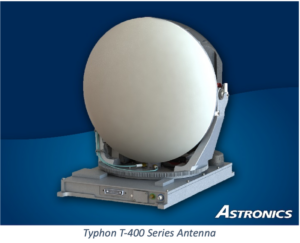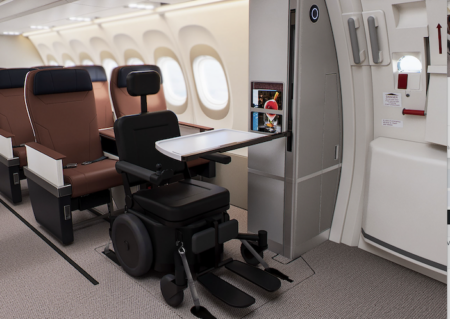Astronics Corporation, a technology provider in the aerospace, defence and other mission-critical industries, has launched the Typhon T-400 Series system, which it says represents the next generation in satellite communications (SATCOM) connectivity technology.
The Typhon T-400 Series is designed to operate seamlessly on any geosynchronous equatorial orbit (GEO)-based Ku satellite network, effectively addressing the challenges associated with the high cost of equipping an aircraft with SATCOM connectivity.
“By leveraging cutting-edge technologies and emphasising installation flexibility, the Typhon T-400 series sets a new standard for connectivity hardware. This innovative system achieves significant optimisation by reducing the number of LRUs [line-replaceable units] required from four to two, thereby streamlining installation and substantially cutting down the total fly-away cost,” said Mike Kuehn, president of Astronics CSC. “Furthermore, customisable variants of the system, including a modem-less configuration, offer special mission and military end-users heightened flexibility.”
 The advanced satellite technology of the Typhon T-400 Series is combined with the Modem Manager (MODMAN) to enable a streamlined Dual LRU system that is claimed to provide both ease of installation and cost savings. The efficiency is enhanced as the system incorporates commonly sourced connectors with low-cost cabling, creating reduced total life cycle costs.
The advanced satellite technology of the Typhon T-400 Series is combined with the Modem Manager (MODMAN) to enable a streamlined Dual LRU system that is claimed to provide both ease of installation and cost savings. The efficiency is enhanced as the system incorporates commonly sourced connectors with low-cost cabling, creating reduced total life cycle costs.
At the core of the Typhon T-400 series is the integration of iQ800 modem technology from iDirect, a satellite communications company. This future-proofed modem is designed to ensure optimal connectivity and data transmission capabilities, empowering seamless communication and the highest available data rates, even in demanding airborne environments.
The MODMAN features a flange mount design and enhanced environmental specifications, enabling secure mounting in any orientation, both inside and outside the pressure vessel, and the antenna can be flexibly mounted on the aircraft fuselage or tail. The modem-less version can be seamlessly integrated with external customer-furnished modems for enhanced security applications, ease of export, and flexible system integration.





